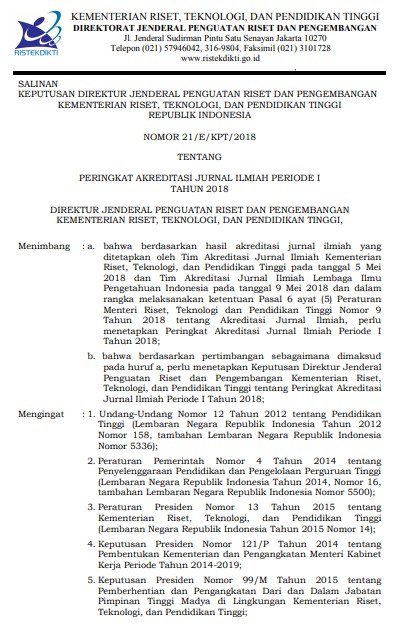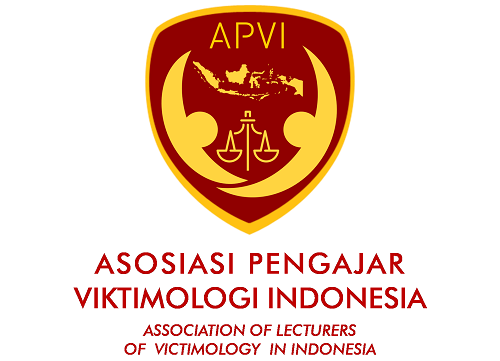Positioning The Civil Servant in Public Position As Public Service Implementer Based on The Level of Profesionalism Measurement
Abstract
The Civil Servants who will occupy positions must be placed with clearer positions and roles. A Civil Servant in placing a position can do his job efficiently and effectively if he knows his position is in accordance with his competence, but there are still several things that cause a Civil Servant to be unprofessional, namely the incompatibility (fitness) between the abilities possessed and the needs of the particular task. in the placement of positions, which has an impact on the low quality of public services. This research formulates the problems: 1). What are the indicators of the principle of professionalism for Civil Servants as implementers of Public Services? ; How does the system place Civil Servants in positions as executor of professional public services? This research is a type of normative legal research, namely legal research by conducting research using library research. The approach used in this research is the Statute Approach, Analytical Approach, Interpretive Approach, Comparative Approach, Legal Philosophical Approach, Legal History Approach, Case Approach Approach), and Legal Political Approach. The technique of processing research materials is carried out by taking an inventory and systematization of the existing laws and regulations. After doing library research, then processing the legal materials that have been obtained by systematizing the written legal materials. Legal materials that have been collected and processed are then analyzed using qualitative and quantitative analysis methods, and using interpretive methods. Conclusions in normative legal research emphasize deductive techniques. Conclusions are drawn in a deductive way. Drawing conclusions starting with deductive techniques through the application of legal theories and concepts in analyzing legal materials. 1). The measurement standards that must be met in determining the level of professionalism of Civil Servants as implementing public services consist of several indicators, namely qualification dimension indicators, competency dimension indicators, performance dimension indicators, and discipline dimension indicators. 2). The system places Civil Servants in public positions as executor of public services. There are three important points that must be in the placement system, First, the system or method of determining identity and determining completely the tasks and requirements in certain positions based on job analysis. Second, position placement based on merit system (skills/skills). Third, conduct education and training (training) to improve the performance of civil servants in public positions.
Keywords: Civil Servants, Merit System, Public Service, Professionalism.
Full Text:
PDF View
References
Ambar Teguh, 2011, Memahami Good Governance dalam Perspektif Sumber Daya Manusia, Gava Media, Yogyakarta.
Amiruddin, 2004, Pengantar Metode Penelitian Hukum, PT. Raja Grafindo Persada, Jakarta.
Bachsan Mustafa, 1985, Pokok-pokok Hukum Administrasi Negara, Alumni, Bandung.
Cholidah Utama, 2015, Pengantar Ilmu Hukum, Noerfikri Offset, Palembang.
Hardiyansah, 2018, Kualitas Pelayanan Publik (Konsep, Dimensi, Indikator, Implementasinya), Gava Media, Yogyakarta.
Jonaedi, 2018, Metode Penelitian Hukum ; Normatif dan Empiris, Prenada Media Group, Jakarta.
Kadarisman, 2018, Manajemen Aparatur Sipil Negara, PT. Raja Grafindo Persada, Depok.
Patra, 2006, Menuju Reformasi Birokrasi ; Pentingnya Profesionalisme dan Partisipasi Masyarakat dalam Pengadaan Pegawai Negeri Sipil (PNS), Piramedia, Depok.
Peter Mahmud Marzuki, 2010, Penelitian hukum, Prenada Media Group, Jakarta.
Mochammad Jasin.dkk, 2007, Implementasi layanan terpadu di Kabupaten/kota, Komisi Pemberantasan Korupsi, Jakarta.
Musanef, 2017, Manajemen Kepegawaian Indonesia, Gunung Agung, Jakarta.
Miftah Thoha, 2016, Manajemen Kepegawaian Sipil Di Indonesia, Prenada Media, Jakarta.
Soerjono Soekanto, 1982, Pengantar Penelitian Hukum, UI Press, Jakarta.
Sri Hartini, 2017, Hukum Kepegawaian di Indonesia ; Edisi Kedua, Sinar Grafika, Jakarta.
Tedi Sudrajat, 2017, Hukum Birokrasi Pemerintahan ; Kewenangan dan Jabatan, Sinar Grafika, Jakarta.
Zainal Asikin, 2015, Pengantar Ilmu Hukum, PT. Raja Grafindo Persada, Jakarta.
Zainuddin Ali, 2011, Metode Penelitian Hukum, Sinar Grafika, Jakarta.
DOI: http://dx.doi.org/10.20884/1.jdh.2022.22.3.3137
Refbacks
JURNAL DINAMIKA HUKUM Indexed by :
 | Jurnal Dinamika Hukum | |
| Faculty of Law, Universitas Jenderal Soedirman | Copyright of Jurnal Dinamika Hukum | |
| Yustisia IV Building, Law Journal Center | ISSN 2407-6562 (Online) ISSN 1410-0797 (Print) | |
| Purwokerto, Central Java, Indonesia, 53122 | JDH is licensed under a Creative Commons Attribution 4.0 International License | |






